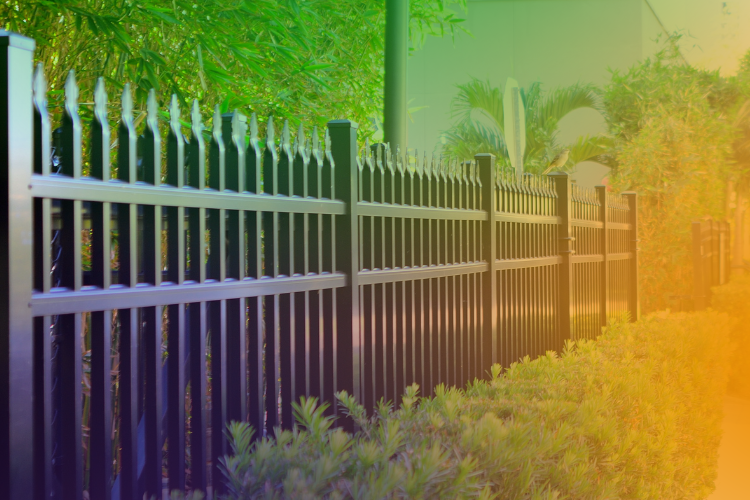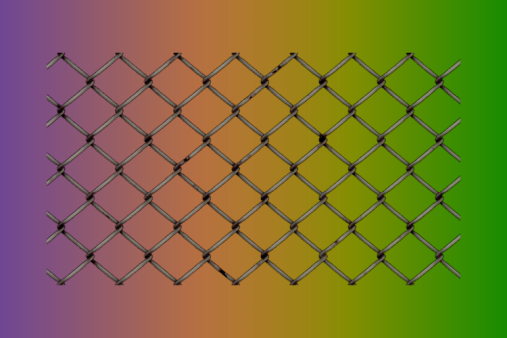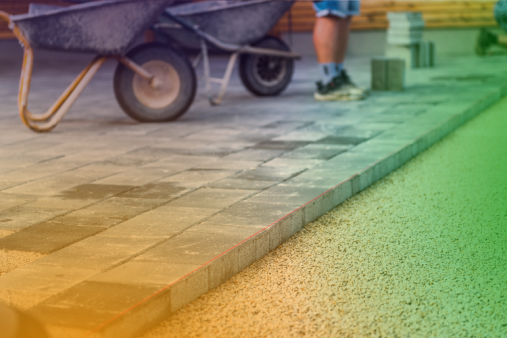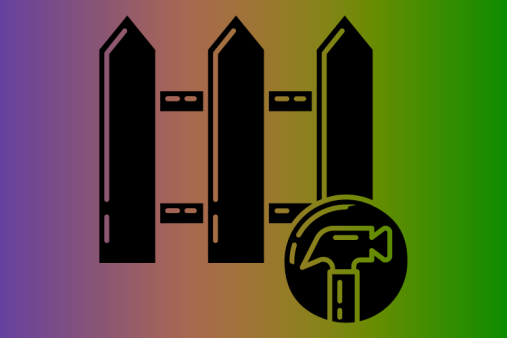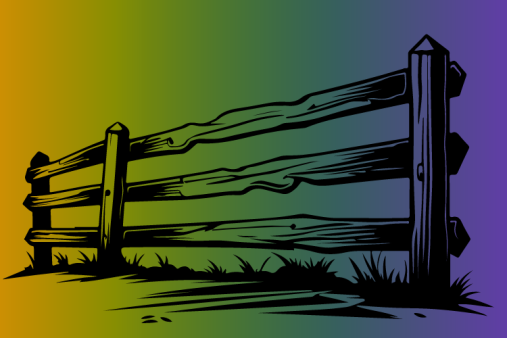When it comes to enhancing your property's security, privacy, or aesthetics, understanding the terminology of fencing is essential. Whether you're a DIY enthusiast planning your first fence installation or a seasoned professional looking to refresh your knowledge, having a comprehensive grasp of fencing terms can make a significant difference.
Our A-Z fencing glossary is designed to help you navigate the intricate world of fencing, from acorn finials to zoning regulations. This guide breaks down over 100 key terms and concepts, providing clear and concise descriptions to ensure you're well-equipped for any fencing project. Dive in and discover the vocabulary that will help you achieve professional results with your fencing endeavors.
A
- Acorn Finial: A decorative element resembling an acorn, often used on top of fence posts.
- Aggregate: Material such as gravel or stone used to provide a stable base for fence posts.
- Anti-Climb Fence: Fencing designed to prevent climbing, often used for security purposes.
- Arris Rail: A triangular rail used to support fence panels in a traditional closeboard fence.
B
- Ballast: A mixture of sand and gravel used to make concrete for setting fence posts.
- Barbed Wire: A type of wire fencing with sharp edges or points arranged at intervals, used for security.
- Batten: A thin strip of wood used to secure fence panels to posts or rails.
- Bollard: A short, sturdy post used to control traffic and prevent vehicle access.
- Boundary Fence: A fence that marks the boundary of a property.
- Butt Joint: A method of joining two pieces of wood end to end.
C
- Cant Rail: A rail with an angled profile, used in closeboard fencing.
- Cap Rail: The top horizontal rail of a fence that caps the fence posts and panels.
- Chain Link: A type of woven fence usually made from galvanised or PVC-coated steel wire.
- Closeboard: A type of fencing made from vertical overlapping boards.
- Concrete Post: A fence post made from concrete, offering durability and strength.
- Coping: A protective cap or covering for the top of a wall or fence.
- Corner Post: A post used at the corner of a fence run to provide support for adjoining fence panels.
- Crimped Wire: Wire that has been formed with a wave pattern to add rigidity.
D
- Dip Treatment: A method of preserving wood by immersing it in a preservative solution.
- Double Leaf Gate: A gate consisting of two leaves or panels that swing open.
- Driveway Gate: A large gate used to secure the entrance to a driveway.
E
- Electric Fence: A fence that uses electrical pulses to deter animals or intruders.
- End Post: A post used at the end of a fence run to provide support for the last fence panel.
- Eye Bolt: A bolt with a looped head used for attaching fencing components.
F
- Feather Edge Board: A type of fence board that is tapered, with one edge thicker than the other.
- Fence Panel: A pre-assembled section of fencing.
- Fence Post Cap: A protective cap that fits over the top of a fence post to prevent water ingress.
- Finial: A decorative element at the top of a fence post or gate.
- Footing: The base or foundation of a fence post, usually set in concrete.
- Frangible Post: A post designed to break upon impact to reduce damage and injury.
G
- Gabion: A cage or box filled with rocks or concrete, used as a retaining wall or fence.
- Galvanised: Steel or iron that has been coated with zinc to prevent rusting.
- Garden Fence: A fence used to enclose a garden area.
- Gate Latch: A mechanism used to secure a gate in a closed position.
- Gravel Board: A horizontal board at the base of a fence to prevent direct contact with the ground and reduce rot.
H
- Hardware Cloth: A type of welded wire mesh used for fencing.
- Hinge: A mechanical device used to attach a gate to a post, allowing it to swing open or closed.
- Hog Ring: A ring used to secure chain link fencing to a tension wire.
- Horse Fence: Fencing specifically designed to contain horses safely.
I
- Intermediate Post: A post used between end or corner posts to support fence panels.
- Ironwork: Decorative metal components used in fences and gates.
J
- Joiner: A connector used to join two sections of fence panels or rails.
K
- Kick Board: Another term for a gravel board, used at the bottom of a fence.
- Knot: A hard, cross-grained mass of wood where a branch was once attached, often visible in fence boards.
L
- Lap Panel: A type of fence panel with horizontal boards that overlap each other.
- Lattice: A framework of crossed wooden or metal strips used as a decorative feature or to support climbing plants.
- Line Post: A post placed at intervals along a fence line to support the fencing material.
- Log Fence: A fence made from logs, often used in rural areas.
M
- Mesh: A network of wire used in various types of fencing.
- Mortice and Tenon: A traditional woodworking joint used in the construction of fence panels and gates.
- Mullion: A vertical bar between the panes of glass in a window or panels in a fence.
N
- Nail Plate: A metal plate with pre-punched holes, used to reinforce joints in fencing.
- Nail-on Fence: A fence constructed by nailing boards directly to posts or rails.
O
- Overlap: The area where two fence boards or panels overlap each other.
P
- Palisade: A type of fence made from pales (vertical boards) spaced apart.
- Panel Clip: A metal clip used to secure fence panels to posts.
- Picket Fence: A fence made from evenly spaced vertical boards, typically used decoratively.
- Pine: A common type of wood used for fencing.
- Post Anchor: A metal bracket used to secure fence posts to a concrete base or deck.
- Post Driver: A tool used to drive fence posts into the ground.
- Post Hole Digger: A tool used to dig holes for fence posts.
- Post Sleeve: A cover that fits over a fence post to protect it from the elements.
- Post Spike: A metal spike used to secure fence posts without the need for concrete.
- Privacy Fence: A fence designed to provide privacy by blocking the view.
Q
- Quarter Round: A moulding used to finish the edges of fencing components.
R
- Railing: Horizontal bars used to support fence panels or as part of a fence design.
- Ranch Fence: A type of fence used on farms and ranches, typically made from wood or wire.
- Reinforced Concrete Post: A concrete post with steel reinforcement for added strength.
- Return: The end section of a fence that returns to the starting point.
- Rivet: A metal pin used to fasten fence components together.
- Rot Board: Another term for a gravel board, used to prevent rot at the base of a fence.
S
- Scalloped Fence: A decorative fence with a curved top edge.
- Security Fence: A fence designed to provide high levels of security, often topped with barbed wire or spikes.
- Slat: A thin, narrow strip of wood or metal used in fencing.
- Slip Board: A board that fits between posts in a slip rail fence.
- Split Rail: A type of fence made from split logs, often used in rural settings.
- Stainless Steel: A type of steel resistant to corrosion, often used in fencing hardware.
- Stanchion: An upright bar or post providing support.
- Staple: A U-shaped fastener used to secure wire fencing to posts.
- Stock Fence: Fencing used to contain livestock.
- Strainer Post: A sturdy post used to provide tension in wire fencing.
- Stretcher: A tool used to stretch wire fencing to the desired tension.
- Strut: A support used to reinforce a post.
T
- Tension Bar: A bar used to secure chain link fencing to terminal posts.
- Tension Wire: A wire used to add tension and stability to fencing.
- Trellis: A framework of light wooden or metal bars used as a support for climbing plants.
- Turnbuckle: A device used to adjust the tension in wires or cables.
U
- U-Channel: A metal channel used to support and secure fence panels.
- Utility Fence: A functional fence used for practical purposes such as enclosing a garden or property.
V
- V-Mesh: A type of wire mesh with a V-shaped pattern, used in fencing.
- Vertical Board: A fence with boards placed vertically, often used for privacy fences.
W
- Wall Plate: A plate attached to a wall to support the end of a fence panel.
- Wattle Fence: A fence made from woven branches or twigs.
- Weatherproofing: The process of treating a fence to withstand the elements.
- Wire Mesh: A type of fencing made from interwoven wires.
- Wood Preservative: A chemical treatment used to protect wooden fences from rot and insects.
- Wrought Iron: A durable and decorative type of iron used in fencing and gates.
X
- X-Brace: A diagonal brace forming an X-shape, used for added strength in fences.
Y
- Y-Post: A type of metal fence post with a Y-shaped cross-section, used for wire fencing.
- Yield Strength: The amount of stress a fence material can withstand before deforming.
Z
- Zinc Coating: A protective layer of zinc applied to metal fencing to prevent rust.
- Zoning: Regulations that determine how property can be used and where fences can be placed.
- Z-Purlin: A Z-shaped metal beam used for structural support in fencing.
